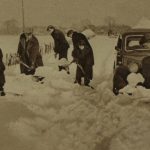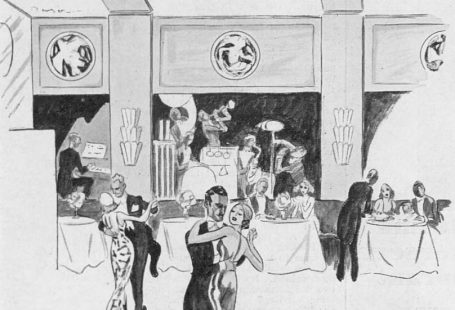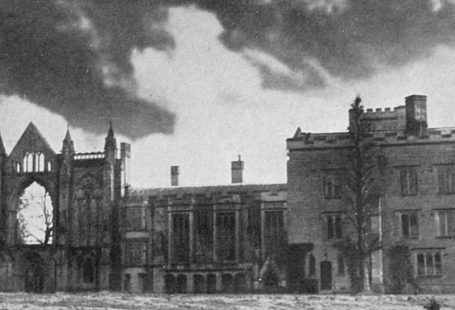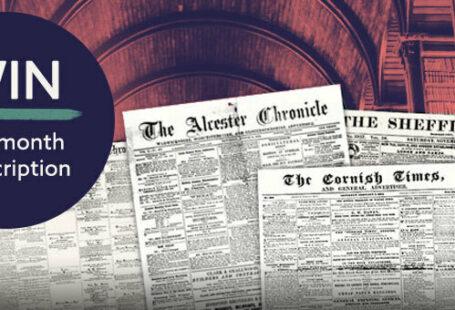Fresh from celebrating our ninth birthday on Sunday, and the landmark of reaching 40 million pages last week, the presses have continued to whir here at the British Newspaper Archive. This week we have added 47,958 new pages to our collection, with one regional title receiving particularly special attention.
Register now and explore the Archive
Receiving the ‘special treatment’ this week is the Leicester Evening Mail, to which we have added the years 1931 to 1949. 1931 was an important year in the history of this particular newspaper, as it changed its name from the Leicester Mail to the Leicester Evening Mail.
Starting life in the Midlands city of Leicester, the Leicester Mail was born with the intention to be the ‘Cheapest and Best Newspaper’ in the area. It indeed sold for one penny, and appeared every Friday covering the latest news from Leicester, as well as the ‘important towns of Loughborough, Melton Mowbray, Ashby-de-la-Zouche, Market Harborough and Hinckley.’
Leicester Evening Mail | 2 June 1934
Switching later to a daily publication schedule, the Leicester Evening Mail expanded to cover national news as well as displaying a strong sporting bias. But local news remained high on the agenda, with the newspaper winning praise for highlighting the pothole situation in Coleman Road, for example.
With the addition of these new pages to the Leicester Evening Mail, we thought it was only fitting to celebrate three of Leicester’s most famous children, through the eyes of their local newspaper.
Richard Attenborough – Actor – 1923-2014
Legendary actor and filmmaker Richard Attenborough grew up in Leicester, where his father was principal of Leicester University College.
A young Richard Attenborough | The Sketch | 17 March 1948
The Leicester Evening Mail followed the young actor’s career from the outset, reporting on the ‘Young City Actor’s Double‘ in August 1942:
A few hours before he made his appearance on the West End Stage last night Richard Attenborough, the eighteen-year-old actor in ‘Awake and Sing’ at the Cambridge Theatre, was sworn in by the RAF. He expects to be called up in about eight months to commence his training as a pilot officer.
Richard Attenborough in uniform | The Sketch | 17 March 1948
However, the article relates how his academic father was not keen on the young Attenborough’s choice of career:
It was against the wishes of his parents that he decided to adopt the stage as his profession, and when he joined the Academy of Dramatic Arts his father asked that he be given the most severe test.
Attenborough passed such a ‘severe test’ with flying colours. After performing speeches from Bernard Shaw’s St Joan and Priestley’s When We Are Married, he was given a scholarship for two years.
Richard Attenborough in 1948 | The Sketch | 17 March 1948
And his success was soon to be recognised on a much wider stage. The Leicester Evening Mail reports in April 1949 that the ‘Leicester-born film actor, Richard Attenborough, features in the first ten male stars chosen in the fourth National Film Award.’ Voted for by 9,264 filmgoers, it was the ‘first occasion on which he has been included in the ‘top-ten’ actors” list, after his breakthrough appearance in Brighton Rock.
And Richard Attenborough would go on to have a glittering career both in front of and behind the camera, and is remembered as one of Leicester’s most famous sons.
Edith Gittins – Social Reformer – 1845-1910
You might not be familiar with the name Edith Gittins, but she was a prominent social reformer in Leicester during the late nineteenth and early twentieth centuries.
In 1949 she is remembered by the Leicester Evening Mail, as the fountain she had bequeathed to the city had begun to run dry:
A neglected yet attractive monument in Leicester is that known as Ethelfrida’s fountain in Victoria Park, close to the De Montfort Hall. It is supposed to be a drinking fountain for children, but last time I pushed the button not a drop could be squeezed out.
The article tells of how the fountain was given by Edith Gittins, and how it was now a ‘memorial to her,’ a ‘great Leicester woman…and outstanding social worker whose efforts overlapped two centuries.’
A sketch by Edith Gittins for The Graphic | The Graphic | 6 May 1882
Whilst her wider family were all ‘engaged in social work in the town,’ Edith Gittins was a ‘water colour artist, a teacher of drawing, and a member of the Leicester Society of Arts.’ But she was also engaged on her own crusade for social improvement:
She was a leader of the Leicester Kyrie Society, a public-spirited movement peculiar to Leicester, which later merged with the Leicester Civic Society, whose object was to bring beauty in every form in humble streets and homes. Edith Gittins also founded the Leicester Woman’s Liberal Association and was a prominent figure in the women’s suffragist movement in Leicester.
Certainly, Edith Gittins was a remarkable woman, whose memory deserves to be celebrated in Leicester and beyond.
Women’s Suffrage Record | 1 March 1904
Johnnie Johnson – Fighter Ace – 1915-2001
Although not strictly a son of Leicester, hailing instead from nearby Melton Mowbray, James Edgar ‘Johnnie’ Johnson was the Second World War’s ‘most decorated fighter pilot.’ The Leicester Evening Mail reports on his progress in 1943, by which he had undertaken ‘200 daylight offensive operations.’
Johnnie Johnson, as depicted in a sketch by Oliver Snell | The Tatler | 6 September 1944
In September of that year, the Leicester Evening Mail is reporting on how the ‘Melton Ace’ had won the ‘Bar to his DSO,’ with ’23 victories to his name.’ Already holding the ‘DFC and bar,’ he was then the second ‘highest scoring pilot in Fighter Command,’ just behind the South African pilot ‘Sailor’ Malan, whose record he was about to overtake.
By the end of the war Johnson had flown second to Douglas Bader, and had 38 confirmed kills. Most of these kills came as part of the Canadian Spitfire wing, and he saw great success after D-Day when he became a Group Captain.
The Leicester Evening Mail reports in May 1946 how the ‘leading fight ace of the RAF’ had been given a new job – namely Chief Tactical Officer of the RAF, with the responsibility ‘for keeping Britain’s fighting planes in the forefront of air combat tactics.’
Johnnie Johnson’s career, like his acting contemporary Richard Attenborough’s, went from strength to strength and he later became a Vice-Air Marshall, serving in Korea and later becoming Deputy Lieutenant for his home county of Leicestershire.
Updated Titles
This week we have updated one of our existing titles.
You can learn more about each of the titles we add to every week by clicking on their names. On each paper’s title page, you can read a FREE sample issue, learn more about our current holdings, and our plans for digitisation.
Title |
Years Added |
| Leicester Evening Mail | 1929-1943 |
You can keep up to date with all the latest additions by visiting the recently added page. You can even look ahead to see what we’re going to add tomorrow.
















